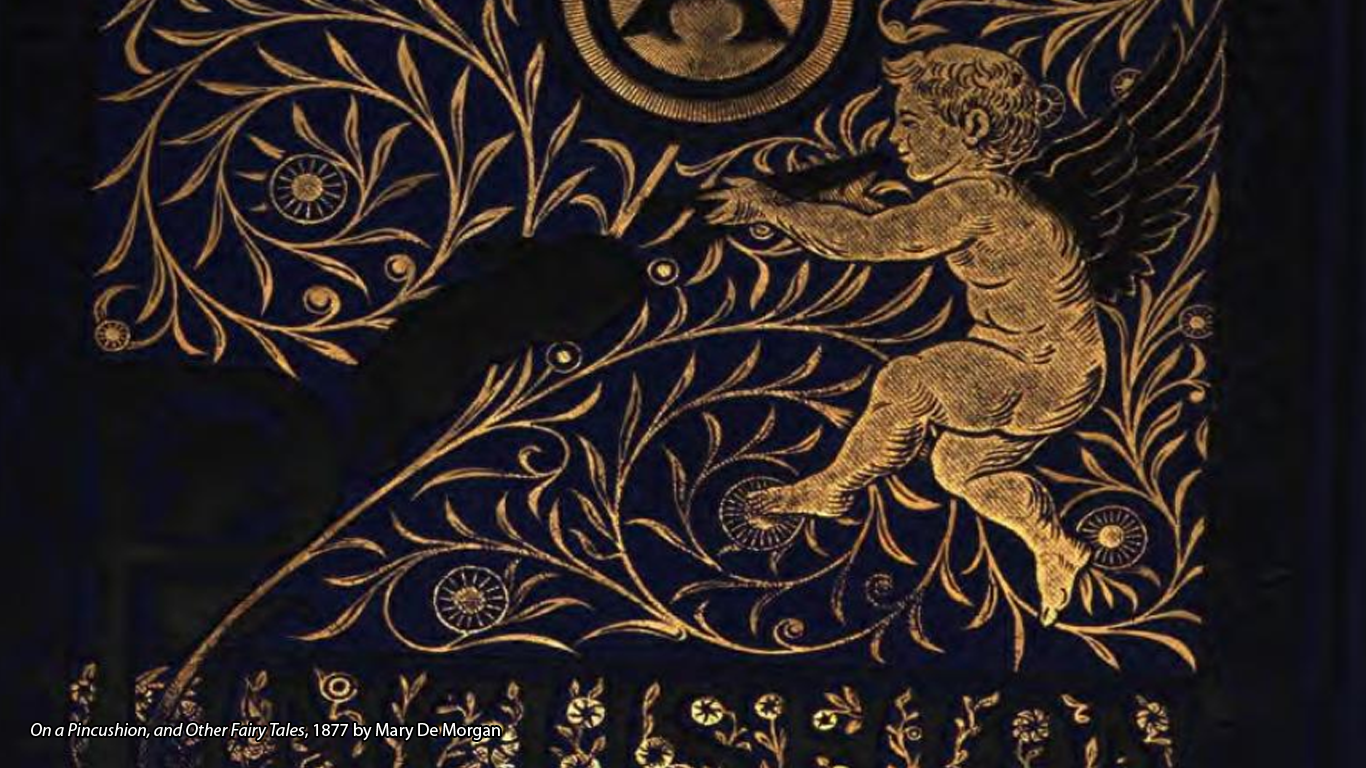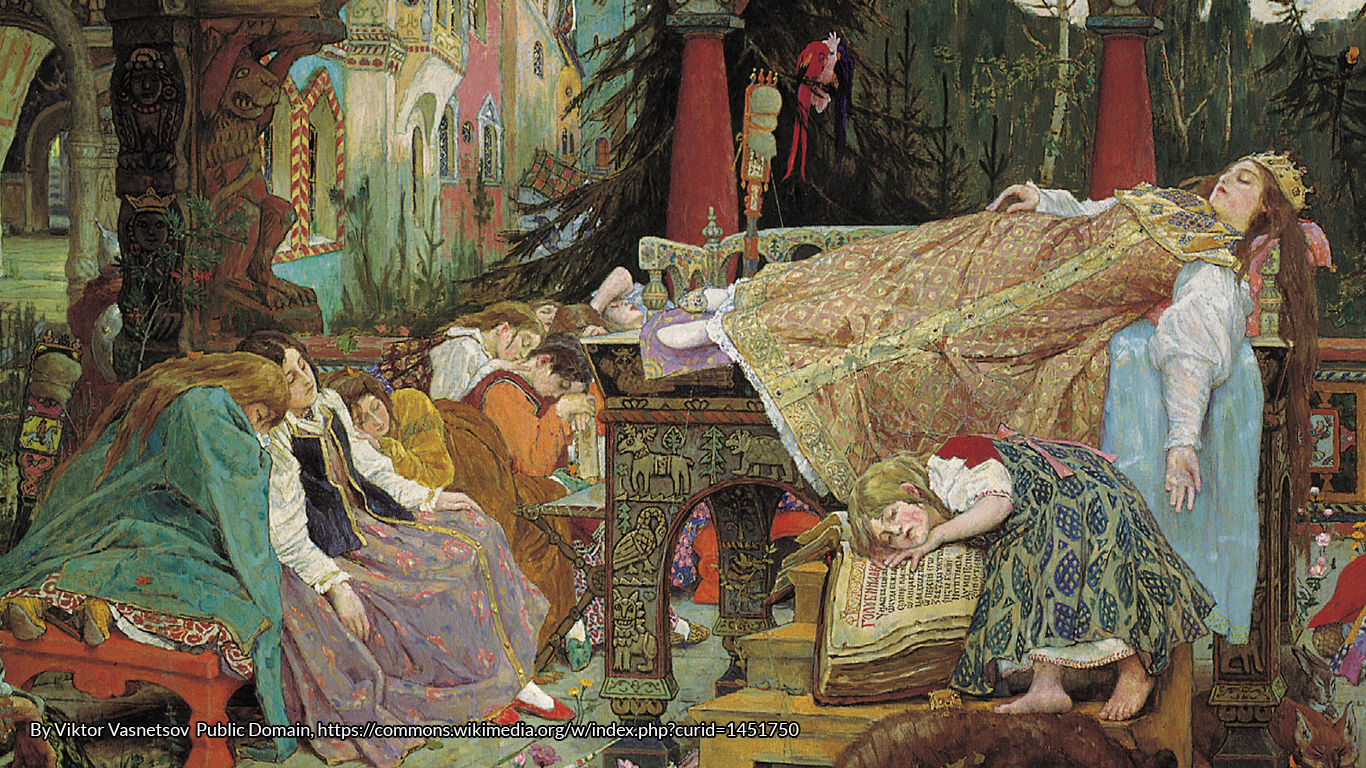Kate Forsyth tells us more about some of the stories featured in her new book of retellings, Snow-White & Rose-Red & Other Tales of Kind Young Women, illustrated by Lorena Carrington.
‘Snow-White & Rose Red’
‘Snow-White & Rose Red’ is a literary tale, adapted by Wilhelm Grimm from a short story ‘The Ungrateful Dwarf’, written by the German children’s writer Karoline Stahl.
Snow-White and Rose-Red are sisters living with their mother, a poor widow, in a cottage by the woods. Red and white roses grow together by the door. One winter night, a bear knocks on the door. He is half-frozen and they let him warm himself by their fire. The girls play with the bear, and he comes back every night for the rest of that winter. When summer comes, the bear tells them that he must go away for he needs to guard his treasure from a wicked goblin. Later the girls rescue the goblin whose beard is stuck in a tree, but he is ungrateful and yells at them for cutting off his beard. The girls encounter him again and again, helping him each time, but he continues rude and ungrateful. Eventually the bear kills the dwarf, and reveals himself as an enchanted prince.
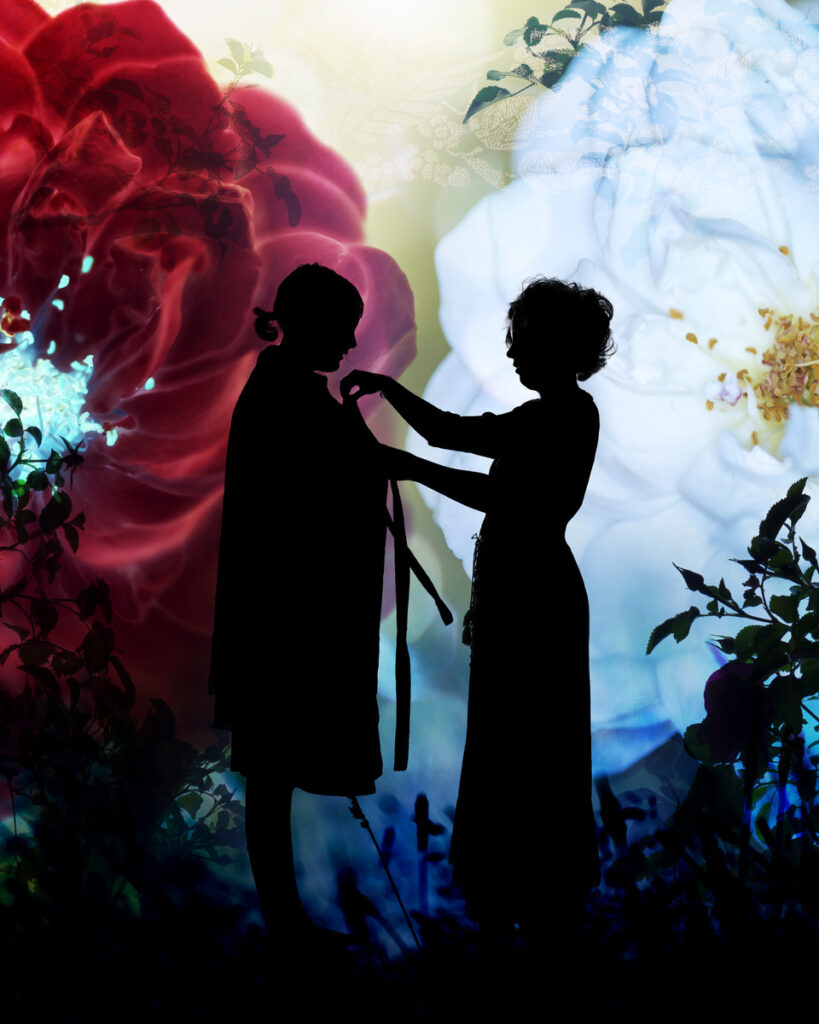
‘Snow-White and Rose-Red’ was one of my favourite childhood fairy tales. Perhaps it was because I was one of two sisters, one fair and the other dark, who lived with a single mother in a loving close-knit family. Although poor, we never lacked for good food, good books or a multitude of pets (though never, sadly, a bear). I always felt a kinship with the dark-haired girl who wandered the meadows and forest looking for flowers and butterflies, and who could feed a hare from her hand. Perhaps as a consequence, red roses have always been my favourite flowers, and Rose-Red is the nickname given to me by one of my dearest friends.
‘Snow-White and Rose-Red’ is one of the few fairy tales that has no known oral origin. Although some of the magical elements in the story – such as the enchanted bear – appear in many other wonder tales, these details were added by Wilhelm Grimm as he adapted Karoline Stahl’s story ‘The Ungrateful Dwarf’. It was Wilhelm who created the strong family unit of a loving single mother supporting her two daughters, an unusual dynamic in fairy tales. He also added in the rhymes, the poetic descriptions, and most of the dialogue, which brings an element of humour to the story. Indeed, he rewrote the story so completely that most scholars consider ‘Schneeweißchen und Rosenrot’ to be the Grimms’ only Kunstmärchen, or invented folktale, akin to the stories of Hans Christian Andersen or Oscar Wilde.
In my version of the tale, I have highlighted the loving warmth of the family and the humour of the ungrateful goblin:
The girls held the goblin fast and tried to free his beard from the fishing line, but all was in vain. Beard and line were entangled tightly together. Quickly Rose-Red pulled out her fishing knife and cut the goblin free. He fell backwards amongst the rushes and the reeds, then sat up and examined his beard which was now only a quarter long as he was tall.
‘You dull-witted dingbat! You’ve cut my beautiful beard! Six hundred years it took me to grow so long, and now look at it. I’m as bare as a baby!’ He shook the end of his beard at them, then grabbed a sack of pearls which lay hidden in the rushes, and dragged it away, shouting back over his shoulder at them, ‘Moronic mooncalves!’
‘Strawberries in the Snow’
‘Strawberries in the Snow’ is inspired by a Slovakian folktale ‘The Twelve Months’. An unwanted stepdaughter is sent out into the snow in search of impossible things by a stepmother with murder in her heart.
Marushka lives at the edge of a great forest with her stepmother and stepsister Holena. They are unkind to her, though Marushka tries hard to please them. One day Holena orders Marushka to go out into the snow and find her violets. The stepmother locks her out of the house. Marushka seeks shelter and finds a small boy lost in the forest. She helps him, and he leads her to a circle of twelve standing stones on the mountaintop. They transform into twelve lords and ladies, all of different ages from very young to very old, sitting on stone thrones. The boy – who is named March – banishes winter and summons spring so she can gather violets. Marushka returns home with the flowers, but her stepmother and sister are only angered and plot to lock her out again.
Marushka is sent out into the winter forest twice more, to gather strawberries and apples. Each time she is helped by a different magical being, after she has shown them kindness and compassion. Eventually, her stepsister Holena rushes out into the snow, hoping to gain riches for herself, but she is rude and unkind. She and her mother perish in the cold. Marushka inherits the cottage and lives there happily, though she never sees the circle of stones again.
Božena Němcová, who first adapted and published this Czech folktale, was born in 1820 in Vienna, the daughter of a coachman and a housemaid. Many believe she was really the illegitimate child of a duchess, given to servants to raise. In her childhood, she lived in the country where her grandmother told her many old stories. At the age of seventeen, Božena was forced into marriage with a man twice her age. Intelligent, artistic and rebellious, Božena began to write poetry and worked on a novel inspired by her grandmother’s life. Eventually she left her husband, and took her children to Prague where she attempted to support herself with her writing. She died in poverty in 1861, aged only forty-two.
The first time I read ‘The Twelve Months’, I noticed the similarities between her tale and other stories of ‘Kind and Unkind Girls’, especially ‘Diamonds and Toads’, retold by Charles Perrault in 1697, and ‘The Three Little Men in the Wood’, collected by the Grimm Brothers in 1812 (it was told to them by Dortchen Wild who would, some years later, marry Wilhelm Grimm). Over one thousand variants of this type of tale have been discovered around the world. At its heart, it has the notion that kindness and courtesy matter. Marushka is compassionate and helps people in need, even if it means trouble and hardship for herself. This is a philosophy that I try to live by. I have rewritten Božena Němcová’s tale with a greater emphasis on the acts of kindness that its heroine Marushka must make in order to win the magical help of the Twelve Months. I also made six of the twelve magical beings women (in the original story, all were men).
‘Do you have any to spare?’ a tremulous voice asked.
Marushka saw a poor beggar-woman crouching nearby, one dirty hand held out pleadingly. She was dressed in tatters, and had a hood drawn up over her head.
‘Of course,’ Marushka said, and broke her bread in half. She saw how thin the beggar-woman was, and so gave her the larger portion. ‘I’m sorry I do not have more,’ she said, as the beggar-woman crammed the food into her mouth.
‘You are kind to give me what you have,’ the beggar-woman said. ‘Tell me, what are you doing here alone in the winter forest, with night coming on and wolves hunting?’
‘I’m searching for strawberries,’ Marushka answered.
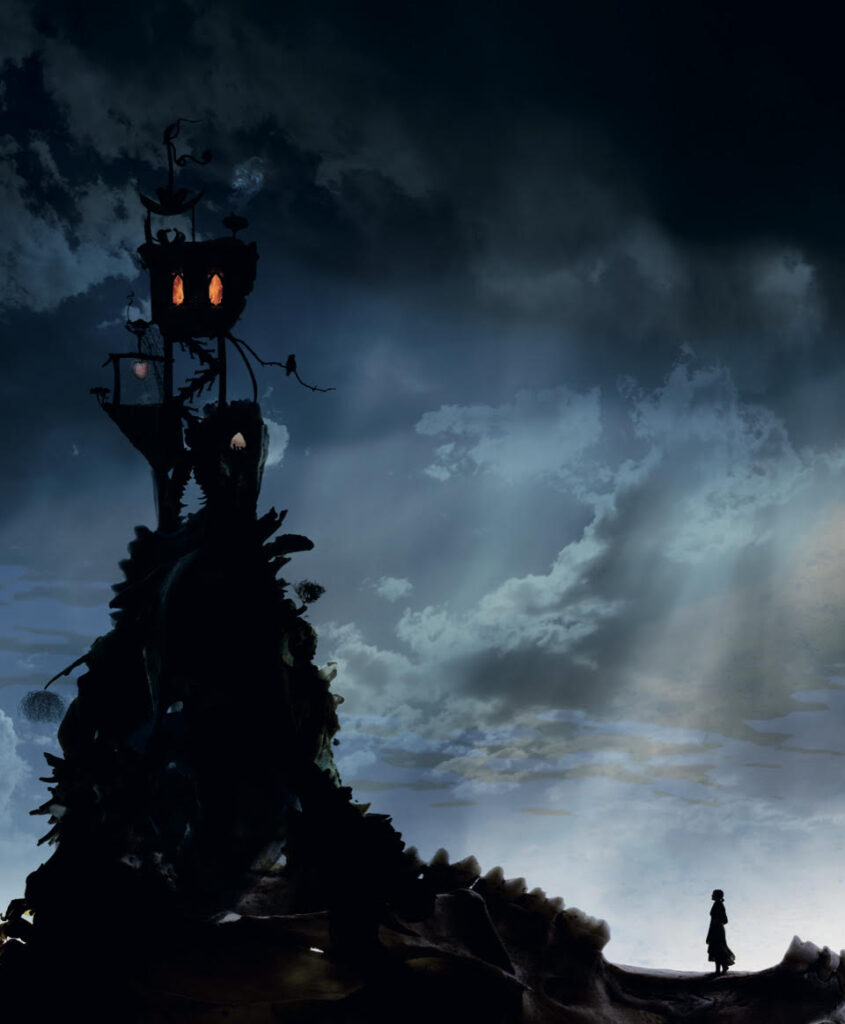
‘The Lass Who Climbed Mischanter Mountain’
‘The Lass Who Climbed Mischanter Mountain’ is a story adapted from Sorche Nic Leodhas’ collection of old Scottish folklore, Thistle and Thyme. It tells the story of a girl who goes in search of her missing sister armed only with a golden coin and a sewing kit.
A girl goes out one morning to wash her face in the morning dew but does not come back. Her younger sister sets out to find her, with the gift of a golden coin from her father and a sewing kit from her mother. Eventually she hears of a warlock who abducts young women. She has to climb a very steep mountain (wonderfully named Mischanter Mountain) to find the warlock’s castle.
On the way she encounters a tinker pulling a heavily loaded cart. Taking pity on him, she offers him her golden coin so he can buy a horse. The grateful tinker offers a word of advice in exchange: everything she sees and hears in the warlock’s castle is not to be trusted. She thanks him and continues on her way. Then she meets a man in such ragged clothes he’s trying to fix the holes with thorns. The girl gives him the pins from her mother’s sewing kit. ‘Gold and silver are a match for evil,’ he tells her. At last the girl reaches the castle. The warlock lets her in and tries to trap her, but with the advice from the two strangers the girl is able to outwit him and save her sister. On the way down the mountain, she and her sister meet the two strangers again, now revealed as handsome young men cursed by the warlock.
The story – originally entitled ‘The Lass Who Went Out at the Cry of Dawn’ – is an interesting variant on the Bluebeard story, classified as Tale Type 312 ‘Maiden-Killer’. It was collected and retold by Sorche Nic Leodhas, the pen-name of an American writer, LeClaire Alger, who was born in 1898 in Ohio. Her father and sister were both writers, and she read a great deal because of a childhood illness. She worked at Pittsburgh’s Carnegie Library from 1929 to 1966, and wrote and retold fairy tales in her spare time. She heard her tales at clan gatherings, family reunions, ceilidhs, and Gaelic club meetings, and retold them with a lyrical and poetic voice.
In her introduction to Thistle and Thyme: Tales and Legends from Scotland (published in 1962), she writes ‘The Lass Who Went Out at the Cry of Dawn’ is ‘a seanachie story from the Lowlands. From Beatock about forty miles or so from Dumfries. This story is unusual because it has practically nothing but action in it and moves along at a fast rollicking swing. Originally, it was probably rhymed.’
A seanachie (pronounced shon-a-hee) was a wandering storyteller, she explains. ‘They took a bit of a legend here and a bit of a cottage tale there, mixed them together with some of the fairy folk, and perhaps a bit of the supernatural, and came out with something distinctive and all their own.’ I like to think I am rather like a seanachie, creating stories that are all my own from the stones and bones of older storytellers. In my retelling of this tale, I have tried to create a stronger sense of the Scottish landscape and culture.
Ailsa wandered up and down the world for many a weary day, across moors drifting with mist and through deep glens frowned upon by towering mountains. One day she came to a steep hill bare of any tree, its slopes streaked with ice. ‘It’s called Mischanter Mountain,’ an old shepherd told her, leaning heavily on his crook. ‘Do not go there, lass. A warlock lives there who steals young maids away.
She looked up at its sharp peak, and saw a castle perched there, grim and grey as granite. ‘Then that is where I must go.’
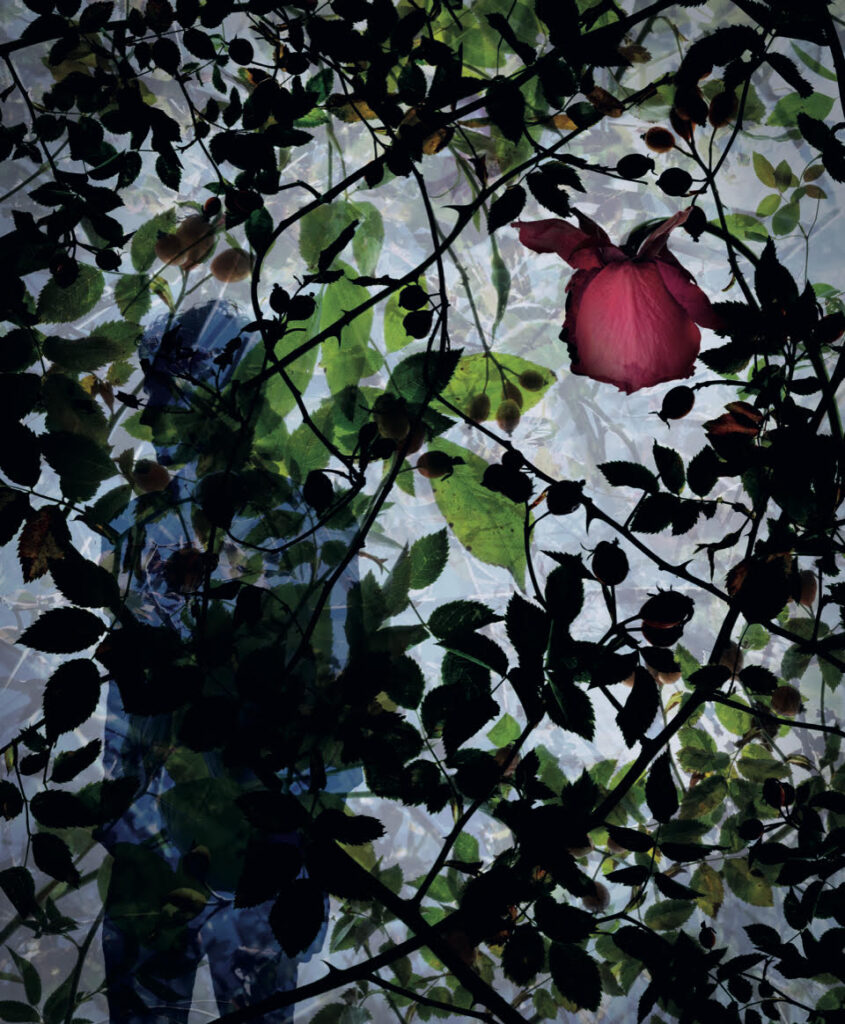
‘Tricking the Witch’
‘Tricking the Witch’ is a recently discovered Bavarian fairy tale, collected by Franz Xaver von Schönwerth in the 1850s. It is very similar to ‘Sweetheart Roland’, a story told by Dortchen Wild to Wilhelm Grimm in 1812, and so I have drawn on both in my retelling.
A girl is taken captive by an evil witch, but secretly learns her magic. One day the witch lures a prince to her house deep in the forest. The girl – whose name is Reinhilda – overhears the witch plotting to kill the prince, whose name is Roland. Reinhilda rescues the prince, steals the witch’s magic wand, and the two escape in the night. The girl tricks the witch by leaving three drops of her blood to speak on her behalf. ‘If you will not leave me, I will not leave you,’ Reinhilda says to the prince. ‘Not now or never,’ he answers.
The witch eventually realises the ruse, and sets out in pursuit. However, when Reinhilda sees the old woman striding toward them in her forty-league boots, she used the magic wand to transform Roland into a lake, and herself into a swan. The witch drinks the water but it is too much for her, and she is sick. Reinhilda and Roland escape, but it is not long before the witch recovers and once more races in pursuit. The girl transforms herself into a church and the prince into a pastor preaching against witchcraft. The witch is overcome, and Reinhilda and Roland escape again. The old woman soon recovers and chases after them once more. So the girl transforms herself into a briar hedge and Roland into a fiddler with a magic violin. As the witch tries to pluck the rose, Roland plays music so irresistible the witch is forced to dance. Caught among the thorns, she dances until she is dead.
In her death throes, however, the witch casts a curse on Roland. He forgets Reinhilda, and goes home. Reinhilda, in the shape of a rose, is plucked by a shepherd. She cannot transform herself because Roland still had the magic wand in the shape of the fiddle. Roland agrees to marry to please his parents. When Reinhilda hears this, she contrives to be taken to the palace. She sings, and Roland recognises her voice and embraces her. The curse is broken, and Reinhilda is transformed back to her own shape.
‘Tricking the Witch’ is categorised as Tale Type 313, ‘The Magic Flight’, and is one of the world’s most widely told stories. In some versions, such as Giambattista Basile’s ‘Petrosinella’ the heroine throws objects behind her that transform into magical obstacles such as forests, lakes and mountains. In other tales, the heroine transforms herself and the hero into these obstacles. The Grimm brothers included at least half-a-dozen different versions of the tale in their fairy tale collection. ‘Tricking the Witch’ was collected by Franz Xaver von Schönwerth and his wife Maria Margaretha Rath in the mid-1850s. The von Schönwerth manuscripts were lost after their deaths, but were rediscovered in 2009 by the Bavarian poet and storyteller, Erika Eichenseer, in the municipal archives of Regensburg. Many have since been published in a 2015 anthology entitled The Turnip Princess and Other Newly Discovered Fairy Tales. The story is often combined with Tale Type 884, The Forsaken Fiancée, as in this tale, told by Dortchen Wild to Wilhelm Grimm in January 1812.
Then the rose began to sing. ‘If you will not leave me, I will not leave you, not now or never’. Roland leapt up and cried, ‘I know that voice. That is the true bride. I do not want anyone else.’ Everything he had forgotten, and which had vanished from his mind, had suddenly come home again to his heart. The rose was transformed into his faithful Reinhilda and she had at last found her sweetheart Roland. Her grief came to an end, and her joy began.

‘The Enchanted Cup’
‘The Enchanted Cup’ is a retelling of ‘The Gipsy’s Cup’ by the Victorian fairytale teller, Mary de Morgan. It was published in her final collection of stories, ‘The Wind Fairies’ (1900).
Mary de Morgan was born in England in 1850, to a family of artists and intellectuals. Her father Augustus was a mathematics professor, and her mother Sophia was an author and spiritualist. Her brother, William de Morgan, was a renowned potter and designer and one of the wider circle of Pre-Raphaelites. Mary lived with her brother for some time, and saw him at work with his potter’s wheel and kiln many times. She began telling her fairy tales to the Morris, Burne-Jones and Kipling children when only a young woman. Mary was a passionate advocate for social change. She worked in East End slums, fought for women’s rights, and went to Egypt to care for girls in a reformatory school.
I love her tale ‘The Gipsy’s Cup’ because it is about ordinary people who live in cottages, and work for their living, and make mistakes and try to make amends. It is a really interesting and unusual variation on the ‘Kind and Unkind Girls’ motif. Unlike so many fairy tales, where good & evil, dark & light, rich & poor and beauty & ugliness are set in rigid binary opposites, this is a story where both young woman do harm and both young women help. One is dark and the other is fair, it is true, but by the end of the tale many of the differences between them have been lost.
Nonetheless, I did make a number of significant alterations to the story, including changing its title. The word ‘gipsy’ or ‘gypsy’ is nowadays seen as perjorative by many of the Roma. I do not believe that was Mary de Morgan’s intention, and so I have removed nearly all uses of the word. I have also made it clearer that it was the potter’s accusation that the young Roma woman was a beggar and a thief that motivated her to make the enchanted cup.
I have also cut the story back a great deal, as it was rather long. Nonetheless, I tried as much as possible to honour the core theme of Mary de Morgan’s original story, which is simply to be kind.
I shall make you a cup quite out of the ordinary, a cup unlike any you’ve ever seen before. It will look plain enough. When you drink from it, and then give it to your true love to drink from, you will have all her heart. Beware that she doesn’t not drink from it again, though. For the first draught will bring love, but the second draught will bring hate.

‘The Pot Who Went to the Laird’s Castle’
‘The Pot Who Went to the Laird’s Castle’ is an oral tale told by Duncan Williamson, a Scottish Traveller born in a bow-tent on the banks of Loch Fyne on the Duke of Argyll’s estate in 1928.
A poor Traveller family are kicked from door to door with no-one to help them. They call at every house and every farm, but no-one will buy their wares. At last they come to an old tumbledown cottage where a young woman is singing and feeding her chickens. The henwife gives the Traveller woman enough food to last them for a week. She then suggests the Travellers camp out in an old ruined cottage up the road, and tells them to help themselves to anything there that may be of use to them.
The Traveller man finds an old pot in the ruins, and the woman uses it to cook soup for their supper. In the middle of the night, the pot runs up to the castle where the cruel laird lives. The cook crams the pot full of good red beef, only for the pot to jump up and ‘deedle-daddle’ back to the Travellers’ camp where they have a fine feast. The next night the pot goes back to the castle and the laird fills it with gold. When he’s not looking, the pot skedaddles back to the Travellers who cannot believe their luck. The third night, the pot wakens them with its noise and the man curses it, saying ‘I hope in God, in the morn when you get up, you’ll never see the pot again.’ In the morning, the pot is gone – but the Travellers are rich and happy.
Duncan Williamson said ‘I was reared, born and bred on stories. That’s all I had in my life.’ One of the world’s most famous oral storytellers, Duncan Williamson spent his early life on the road, travelling the hills and moors of the Highlands on foot. Neither his mother nor father could read or write, but there were singers, pipers and storytellers on both sides. He learned his stories and songs from fellow Travellers, and used to tell his tales at fairs and markets.
In 1973, he was discovered by the American folklorist Linda Headlee who began to record and transcribe his repertoire. They married in 1976. ‘The Pot Who Went to the Laird’s Castle’ was originally told to Duncan Williamson by his maternal uncle, and was published in Fireside Tales of the Traveller Children in 1983.
In my retelling, I have reduced some of the Scots dialect, developed the henwife’s character, and tried to increase the atmosphere of mystery and wonder.
So the Traveller woman walked up the narrow rutted path through the heather, carrying her baskets over her arm. She walked slowly, for she was faint and weak, and the path was steep. At last she reached a small white-washed cottage with a red painted door. Its steep thatched roof was so low a nimble goat had leapt up and was chewing on the straw. Stones hung down from the low eaves to stop the thatch from being torn away in the gales. Smoke drifted from the chimneys at either end.
A young woman sat on the broad stone step, knitting busily. Her wild red hair had escaped its bun and blew about her round freckled face. Her petticoat was scarlet and her bodice was blue, and a warm plaid had been flung over her shoulders against the evening chill. As her needles clattered, she sang an old ballad. An old tabby cat with a torn ear and only one eye sat in her lap, kneading his paws contentedly. Chickens scratched all around her, and a black-and-pink pig rooted in the nettles. She looked up as the Traveller woman ventured closer, and smiled. ‘Och, you’ve come far! Come, sit down, have a dram with me. Tell me your story.’
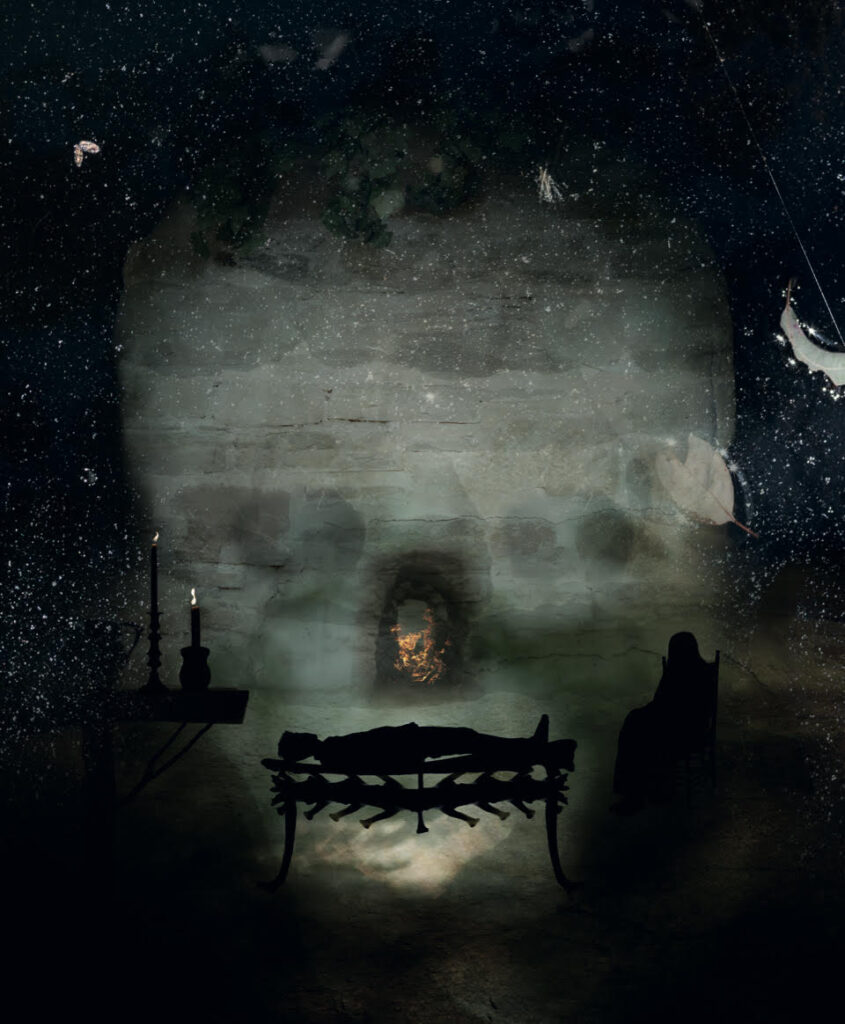
‘The Corpse Watchers’
‘The Corpse Watchers’ was collected from oral storytellers in Ireland by Patrick Kennedy and published in Legendary Fictions of the Irish Celts in 1891. It was, he said, the tale most often told to him as he travelled about Northern Ireland collecting stories. It has its roots in the Irish tradition of the ‘wake’ – watching over a dead body for three days before burial. The story was then retold by Irish-born Canadian storyteller, Alice Kane, and included in Tales From An Unknown City, a collection selected by Dan Yashinky from the many stories told at ‘One Thousand and One Friday Nights of Storytelling’, a weekly open gathering in Toronto begun in 1978 and still going strong today. It was then included in the 1998 anthology Fearless Girls, Wise Women, and Beloved Sisters: Heroines in Folktales from Around the World by Kathleen Raglan, where Lorena first read it. It is another tale of ‘Kind and Unkind Girls’, but made remarkable by the freshness and originality of its motifs.
The story begins with a widow with three daughters. The eldest one sets out on a journey to seek her fortune. An old woman begs her for some food but she refuses. Later the eldest daughter is offered money to watch over a corpse all night. She agrees, but in the middle of the night the corpse wakes up and speaks to her. She is too frightened to answer, and so he strikes her with a stick and she is turned into a flagstone. The second sister repeats her adventure and is also turned to stone.
The third daughter, however, is kind to the old woman who then promises to help her. When the corpse awakens, the third daughter responds to him. He said she was full of courage but wouldn’t be brave enough to follow him since he had to cross the quaking bog, go through the flaming forest, past the pit of terror, climb the mountain of glass, and dive from the top into the depths of the ocean. Although the journey sounded full of peril, the girl said she would follow him as she had promised to watch over him.
The young man leaps out the window and she follows him through all the dangers of his strange journey. At every new ordeal, the old woman helps her with some deft act of magic. At last they find their home, to find the spell has been broken and the corpse is now alive and well. Her sisters are saved, and they all lived happily ever after. In my retelling, I have drawn upon other Irish traditions – such as the curse o’ the crows and the blessing o’ the bees – to add depth and colour and cultural significance to the tale.
She was woken in the dead of the night by the ringing of church bells. Twelve times they rang. The girl remembered she had promised to say a blessing over the corpse at midnight, but it was too dark and chilly, and so – as the last toll of the bell died away – she huddled down in her shawl once more.
All at once the corpse sat up. The coins fell from his eyes. He caught them and laid them down on the table. The girl stared in terror as he turned towards her and said, ‘All alone, fair maid?’
She could not answer.
He got to his feet and gazed at her with eyes as black and fathomless as night. ‘All alone, fair maid?’ he asked again and took a step towards her.
Still she could not speak, her throat muscles frozen with fright.
He took another two steps forward so that he stood over her, blocking out the unsteady light from the candles.
‘All alone, fair maid?’ he asked for a third time.
When she again failed to answer, he reached out and touched her between the eyes with one ice-cold finger.
At once she was turned to stone.



